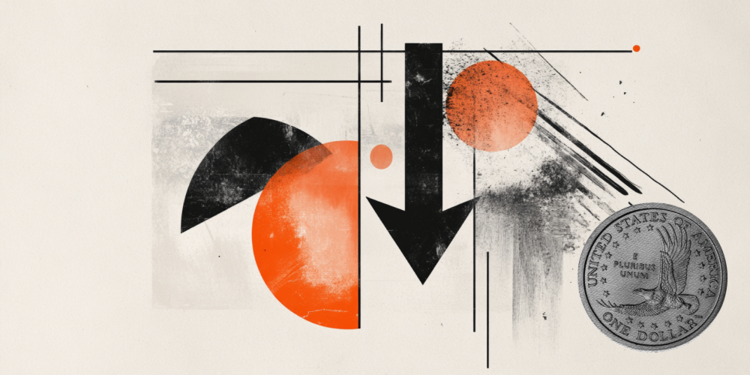- The Dollar extends losses for the second day in a row amid a mild risk appetite..
- A positive ECB finance report and “not too bad” Japanese elections are buoying the Euro and the JPY.
- Increasing concerns about US tariffs keep the US Dollar supported near recent highs.
The US Dollar extends Friday’s reversal on Monday’s European morning session. A moderate risk appetite in the absence of key fundamental releases and the lower US Treasury yields are acting as headwinds for the US Dollar.
In Europe, An ECB Survey on Access to Finance of Enterprises revealed that European firms are optimistic about the economic outlook, although concerned about the potential impact of Trump’s tariffs. The Euro nudged higher following the release of the survey, increasing pressure on the USD.
Somewhat earlier, the Japanese Yen appreciated af ter the Japanese elections left the door open for Prime Minister Ishiba to continue and avoid the feared tax-cutting agenda of the opposition party. Ishiba’s ruling coalition lost the majority in the upper house by only three seats, but the Prime Minister vowed to continue, focusing on the trade negotiations with the US.
Risk appetite, however, remains limited as anxiety about tariffs increases with the August 1 deadline around the corner and the lack of progress in the trade talks. Trump escalated tensions with the EU over the weekend, pushing for 15% to 20% blanket tariffs to the EU, and the bloc is pondering increasing the 10% tariffs on US products even if a deal is reached.
US Dollar FAQs
The US Dollar (USD) is the official currency of the United States of America, and the ‘de facto’ currency of a significant number of other countries where it is found in circulation alongside local notes. It is the most heavily traded currency in the world, accounting for over 88% of all global foreign exchange turnover, or an average of $6.6 trillion in transactions per day, according to data from 2022.
Following the second world war, the USD took over from the British Pound as the world’s reserve currency. For most of its history, the US Dollar was backed by Gold, until the Bretton Woods Agreement in 1971 when the Gold Standard went away.
The most important single factor impacting on the value of the US Dollar is monetary policy, which is shaped by the Federal Reserve (Fed). The Fed has two mandates: to achieve price stability (control inflation) and foster full employment. Its primary tool to achieve these two goals is by adjusting interest rates.
When prices are rising too quickly and inflation is above the Fed’s 2% target, the Fed will raise rates, which helps the USD value. When inflation falls below 2% or the Unemployment Rate is too high, the Fed may lower interest rates, which weighs on the Greenback.
In extreme situations, the Federal Reserve can also print more Dollars and enact quantitative easing (QE). QE is the process by which the Fed substantially increases the flow of credit in a stuck financial system.
It is a non-standard policy measure used when credit has dried up because banks will not lend to each other (out of the fear of counterparty default). It is a last resort when simply lowering interest rates is unlikely to achieve the necessary result. It was the Fed’s weapon of choice to combat the credit crunch that occurred during the Great Financial Crisis in 2008. It involves the Fed printing more Dollars and using them to buy US government bonds predominantly from financial institutions. QE usually leads to a weaker US Dollar.
Quantitative tightening (QT) is the reverse process whereby the Federal Reserve stops buying bonds from financial institutions and does not reinvest the principal from the bonds it holds maturing in new purchases. It is usually positive for the US Dollar.
Read the full article here


